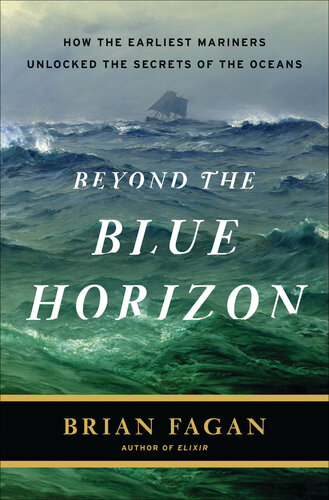
The Intimate Bond
How Animals Shaped Human History
کتاب های مرتبط
- اطلاعات
- نقد و بررسی
- دیدگاه کاربران
نقد و بررسی

February 16, 2015
Fagan (The Attacking Ocean), emeritus professor of anthropology at the University of California, Santa Barbara, delivers on the promise of his title by focusing on the domestication of eight species: the dog, goat, sheep, pig, cattle, donkey, horse, and camel. In each case he blends his anthropological and historical skills to explore how the process of domestication took place and affected both humans and animals. The dog was domesticated first, according to Fagan, and as with all the animals he discusses, there were significant benefits to both parties. Wolves, dogs’ ancestors, gained by having a more reliable food supply, and humans benefited from the protection offered by wolves and their “matchless sense of smell and silent tracking abilities.” The shift from hunting to herding yielded dramatic changes that completely remade human society: populations became sedentary and the twin concepts of wealth and inheritance began to appear. The domestication of donkeys from wild asses somewhere around 5000 B.C.E. helped “globalize much of the eastern Mediterranean world.” He also examines the more recent shift in
perspective that turned animals into industrial commodities, leading to industrial-scale abuse and cruelty. Throughout, Fagan presents well documented and fascinating stories that
illuminate an important facet of human cultural evolution.

Starred review from February 1, 2015
Fagan (Emeritus, Anthropology/Univ. of Calif., Santa Barbara; The Attacking Ocean: The Past, Present, and Future of Rising Sea Levels, 2013, etc.) brings consummate skill to this frequently horrifying study of humanity's interaction with animals.The author considers his book a purely historical inquiry, not simply an account of how our relationships to Earth's other inhabitants have changed over 2.5 million years, but how our interdependent relationships with eight mammals-dogs, goats, sheep, donkeys, pigs, cattle, camels and horses-have profoundly shaped human history. Fagan notes that the very word "animal" has roots in the Latin term anima, or "soul." He then reveals how early humans defined their world in terms of the animals that were potent ritual partners and discusses how animals went from being respected as individuals to the modern commodification of select species as work animals and food. Eventually, traditional hunting, subsistence farming and husbandry yielded to systematic agriculture, large-scale herding, permanent settlements, cities and the Industrial Revolution. But the story is subtler and more involved than a partnership-to-exploitation narrative, involving not only Western concepts of animals as human possessions, but also a fundamental, distancing shift in humankind's relationship to the natural environment. Fagan ably explains the various mentalities and contradictions inherent in that story, and he studies a priceless archive of memory, embodied in legend and folklore, regarding associations between animals and people before wholesale domestication became subjugation. Still, our understanding of the factors that transformed wild creatures into domestic beasts owes much to conjecture and interpretation, something Fagan is keen to point out. His analysis, however, is sound, the product of an accomplished archaeological and anthropological background. Though reminding us of the cruelties still visited upon animals and insisting that we respect them anew-not merely as pets or idealized creatures of the wild-Fagan offers no resolutions to our conflicting attitudes toward them, but his compelling, cohesive book calls for further enlightenment.
COPYRIGHT(2015) Kirkus Reviews, ALL RIGHTS RESERVED.

Starred review from February 15, 2015
Prolific writer and scholar Fagan (emeritus, anthropology, Univ. of California, Santa Barbara; Beyond the Blue Horizon) takes the reader on a journey from the prehistoric era to Victorian England to reveal the ever-shifting dynamic between animals and humans. He focuses on humankind's relationship with eight animals in particular: dogs, goats, sheep, pigs, cattle, donkeys, horses, and camels (with plenty of fascinating anecdotes and sidebars about other types of creatures, such as cats, included). The result of Fagan's exhaustive research is thought provoking and at times heartrending. The author skillfully traces the arc of human-animal relationships from ancient partners in survival to the master-servant dynamic we still see today despite the efforts of animal-rights activists. In later chapters, he points out that at certain times and places in history, social class played a role in how animals were viewed. For example, the pampered purebred dogs of the higher classes were treated as beloved pets, while the mongrels of the lower classes were considered dirty and dangerous. VERDICT History, anthropology, and cultural studies enthusiasts will enjoy this excellent, intelligent book, as will animal lovers of all stripes.--Jennifer Stout, Virginia Commonwealth Univ. Lib., Richmond
Copyright 2015 Library Journal, LLC Used with permission.

























دیدگاه کاربران